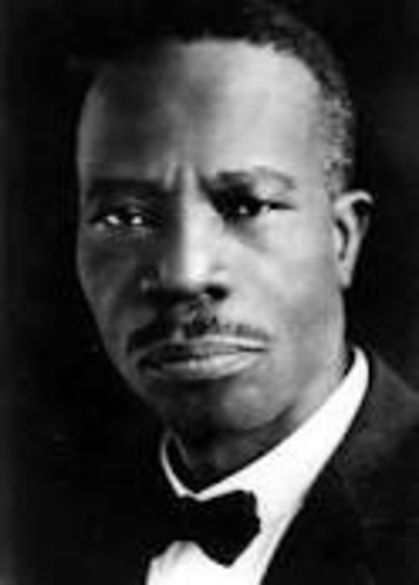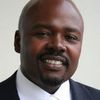
Bishop Charles Harrison Mason, founder of the Church of God in Christ
By John W. Fountain
She was a mighty church. The “holiness” church. “Saved.” “Sanctified.” The church where so-called “holy rollers” rolled around the church’s floors, overcome by the Holy Spirit.
Out on South State Street, beneath a glowing tent under the booming voice of Bishop Louis Henry Ford, in the shadow of St. Paul Church of God in Christ, she shone like a full moon, bidding the poor and disenfranchised to come.
As a child, I witnessed the prayer of faith transform. I saw big burly men reduced to repentant tears and dripping with humility, their arms raised at the tent’s altar. Witnessed services suddenly transformed into spiritual revivals. A church founded upon prayer, fasting and faith, and a mantra to serve “the least of these,” which spoke louder than clanging cymbals and twanging guitars. That resounded above the choir and the piping Hammond organ.
It was an unsophisticated church, yet dignified. Glorious, and yet humble. Grand, and yet intimate, caring.
It was a church perhaps called for such times. A church rich with our history. A church that always stood as more than a symbol of vainglory, opulence and religious self-indulgence.
I loved the Church of God in Christ--though my church seems today to have lost so much of its luster, in my eyes. Pomp and circumstance, glitter, gators and glam, and a slow drifting away from its humble roots make it difficult for me to differentiate my grand old church from others in this dispensation of a bling-bling Gospel.
The church (aka COGIC) was founded in 1907 by Bishop Charles Harrison Mason, inspired by attending the Azusa Street Revival in Los Angeles, California--led by the Reverend William J. Seymour, a one-eyed Baptist preacher.
The Azusa Revival, known as the beginning of the Pentecostal movement, began as prayer meetings in believers’ homes as they sought the baptism of the Holy Ghost, which, Seymour believed, would be accompanied by “speaking in tongues.” Most striking to me, from accounts I have read, was the lack of a formal order of worship and instead a reliance on the leading of the Holy Spirit, on prayer and supplication. The emphasis on submission of the heart, mind and soul with a Christ-centered focus.
Just the quintessential elements of worship: spirit and truth. No frills.
Mason established the church--whose 110th Holy Convocation begins Nov. 6, in St. Louis, Missouri--on the doctrine of the Day of Pentecost, as recorded in Acts 2:4. Mason emphasized the baptism of the Holy Spirit and complete sanctification of believers’ lives, which meant living free from the indulgences of sin.
The church--birthed 42 years after passage of the 13th Amendment, in the middle of Jim Crow, 57 years prior to the passage of the Civil Rights Act--became one of the largest Pentecostal bodies in the world with more than six million members and churches on every habitable continent. A church built, not by the religious elite, but by the hands of sharecroppers, farmers and plain God-fearing black folks.
It was a church perhaps called for such times. A church rich with our history. A church that always stood as more than a symbol of vainglory, opulence and religious self-indulgence. The church (Mason Temple COGIC in Memphis) where, in 1968, Dr. Martin Luther King delivered his “Mountaintop” speech.
The church (Faith Temple COGIC in Harlem, New York) where, in 1965, the body of Brother Malcolm X lay in state and he was eulogized after other houses of worship had declined. The church (Roberts Temple COGIC), where, in 1955—five years before my birth—Bishop Louis Henry Ford gave a stirring eulogy of Emmitt Louis Till.
The COGIC lifted up our heads. Made you square your shoulders and stand erect--no matter how poor. It preached not material prosperity, but the power to live gloriously and contentedly in the sufficiency of what we had while also working by faith to improve our lives.
As a kid, it felt so good to be around the saints--the mothers dressed in unspotted whites and the dignified brothers in pressed suits and ties.
“…This is the Church of God in Christ,” I bellowed, clapping and singing proudly the church’s theme song for many years with the congregation. “Oh, you can’t join it, you’ve got to be borrrrn in-nnn it. This is the Church of God In Christ...”
That’s the church I was born into. The church I still love--even as I long for the church I once knew.
Email: Author@johnwfountain.com
This essay is an excerpt from John W. Fountain’s forthcoming release: “No Place For Me: Letters To The Church In America”

